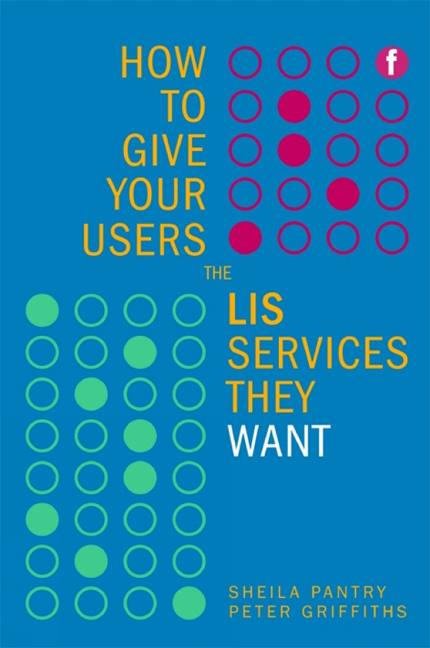Book contents
- Frontmatter
- Contents
- Preface
- 1 Why this book?
- 2 Understanding users – the what, why, where, when, how and who
- 3 What is the current knowledge about your users and their needs – is it really predictable?
- 4 Great expectations: how LIS professionals can manage and train users
- 5 Using information about past user behaviour
- 6 Making the most of knowing your users
- 7 Keeping track of changes in what users want
- 8 Tracking the future
- 9 Future perfect?
- Appendix 1 Reading list and references
- Appendix 2 Where to go for further information
- Index
3 - What is the current knowledge about your users and their needs – is it really predictable?
Published online by Cambridge University Press: 08 June 2018
- Frontmatter
- Contents
- Preface
- 1 Why this book?
- 2 Understanding users – the what, why, where, when, how and who
- 3 What is the current knowledge about your users and their needs – is it really predictable?
- 4 Great expectations: how LIS professionals can manage and train users
- 5 Using information about past user behaviour
- 6 Making the most of knowing your users
- 7 Keeping track of changes in what users want
- 8 Tracking the future
- 9 Future perfect?
- Appendix 1 Reading list and references
- Appendix 2 Where to go for further information
- Index
Summary
In this chapter we look at:
➡ discovering your users – who are they and where are they?
➡ identifying and allocating the different categories of user, e.g. students, lecturers, and business, technical, scientific and medical users
➡ levels of user expectations
➡ whether you can predict what your users want.
The task of the LIS manager is to achieve defined objectives. A simplistic statement, perhaps, but it is rare that such objectives are set out in any terms other than the broadest – for example, ‘to meet the needs of its users’. In fact, the definition of objectives in any service organization is likely to be an iterative process that adds precision to and takes account of emerging requirements such as those produced by emerging technologies. But however these changing requirements are handled, the explicit responsibility to meet users’ needs requires the manager and his or her staff to examine user behaviour as a first step to determining policy.
Who and where are your users?
The introduction of electronic services widens the scope of the customer base for any LIS. The information user is no longer obliged to visit the service to interact directly, for example by browsing the shelves (which as digital resources become the norm house a rapidly diminishing proportion of the library's total stock) or meeting the staff face to face. The customers of any LIS are likely to be anyone who has access to a computer or other electronic terminal with the right software to gain entry to the remote information system and who is not excluded by your access controls.
The traditional pattern of service has been based on separate services each with a target audience, often defined by membership of another group. Thus in a single city, a public library, university library and various special libraries may have co-existed for many years. Eligibility to use the services of each would be defined by referring to certain characteristics of the users, such as where they live or work (public library), where they are educated (school or university library) or where they work (special libraries). Although in some cases permission to use another library could be created through co-operative schemes like the UK's SINTO or HATRICS, generally eligibility and membership were clearly defined and usually exclusive.
- Type
- Chapter
- Information
- How to Give Your Users the LIS Services They Want , pp. 33 - 44Publisher: FacetPrint publication year: 2009



